Opinion & Analysis
Do you really need to buy new wedges?
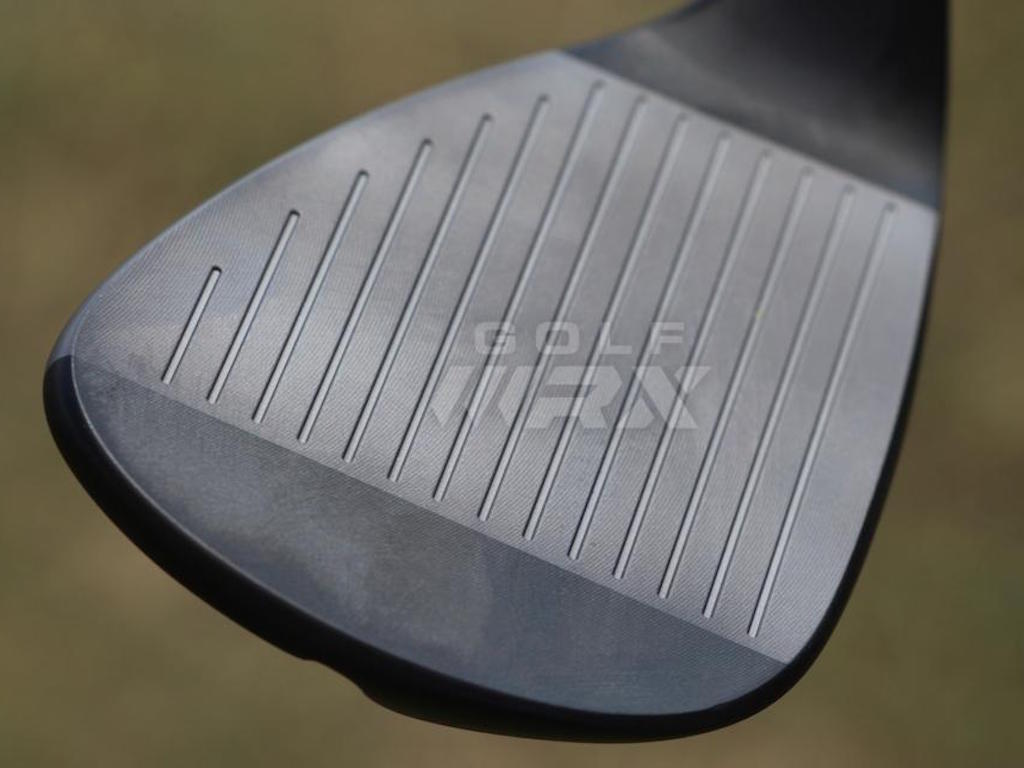
I’m as guilty as the rest of the golfing population when it comes to replacing my wedges too infrequently. Quite frankly, the only time I’ve changed them over the last few years is when I’ve been sent new clubs to test by my equipment sponsor.
If I was left on my own, I’m sure I would use my wedges until the paint fell off. It’s NOT the best idea, but my attitude has been like a lot of you in the golfing world: “It really doesn’t matter for as little golf as I play.”
This story was prompted by a few new wedges I was sent to try. We all hear about how often PGA Tour players change their wedges, and how much spin we’re losing by not changing our wedges more frequently. It is true?
To help you understand the real impact of worn grooves, I put it to the test. I hit four common wedge shots with three different wedges on Trackman that included:
- A new, 58-degree wedge
- A worn-out, 58-degree wedge (used for one season)
- A “super” worn-out, 58-degree wedge (used for multiple seasons)
The New Wedge
The Worn-Out Wedge
The “Super” Worn-Out Wedge
The Results
10-Yard Flop
- Super Worn: 3398 rpm
- Worn: 4262 rpm
- New: 4226 rpm
25-Yard Stock Shot
- Super Worn: 5249 rpm
- Worn: 4613 rpm
- New: 5291 rpm
40-Yard Stock Shot
- Super Worn: 6739 rpm
- Worn: 6195 rpm
- New: 6710 rpm
The only thing I can tell you about the 25- and 40-yard shot is that the super worn-out wedge seemed to have a sharper leading edge, and it felt like it was digging perfectly for my motion. As you can see in the Trackman screen shots at the bottom of this story, the ball was coming out flatter than the worn-out wedge, which decreased my spin loft and added spin.
For more information on spin loft with wedges, see “The Wedge Project” by Andrew Rice at www.andrewricegolf.com
Full Shot (80 Yards)
- Super Worn: 9435 rpm, peak spin rate of 10,117 rpm
- Worn: 10,260 rpm, peak spin rate of 10,400 rpm
- New: 10,641 rpm, peak spin rate of 11,121 rpm
The numbers tell us that wedge gurus are correct in saying that new wedges work better than the old ones when it comes to creating spin. The older the wedge, the less it will likely spin at all distances.
For that reason, I would suggest changing your wedges when you begin to see the initial effects of wear so you can keep your “grip” on the greens. The first signs include wedge shots that launch higher than normal — particularly from the rough — and don’t stop or spin back as much as they once did.
- LIKE242
- LEGIT56
- WOW12
- LOL15
- IDHT6
- FLOP21
- OB15
- SHANK128
Opinion & Analysis
The Wedge Guy: What really makes a wedge work? Part 1

Of all the clubs in our bags, wedges are almost always the simplest in construction and, therefore, the easiest to analyze what might make one work differently from another if you know what to look for.
Wedges are a lot less mysterious than drivers, of course, as the major brands are working with a lot of “pixie dust” inside these modern marvels. That’s carrying over more to irons now, with so many new models featuring internal multi-material technologies, and almost all of them having a “badge” or insert in the back to allow more complex graphics while hiding the actual distribution of mass.
But when it comes to wedges, most on the market today are still single pieces of molded steel, either cast or forged into that shape. So, if you look closely at where the mass is distributed, it’s pretty clear how that wedge is going to perform.
To start, because of their wider soles, the majority of the mass of almost any wedge is along the bottom third of the clubhead. So, the best wedge shots are always those hit between the 2nd and 5th grooves so that more mass is directly behind that impact. Elite tour professionals practice incessantly to learn to do that consistently, wearing out a spot about the size of a penny right there. If impact moves higher than that, the face is dramatically thinner, so smash factor is compromised significantly, which reduces the overall distance the ball will fly.
Every one of us, tour players included, knows that maddening shot that we feel a bit high on the face and it doesn’t go anywhere, it’s not your fault.
If your wedges show a wear pattern the size of a silver dollar, and centered above the 3rd or 4th groove, you are not getting anywhere near the same performance from shot to shot. Robot testing proves impact even two to three grooves higher in the face can cause distance loss of up to 35 to 55 feet with modern ‘tour design’ wedges.
In addition, as impact moves above the center of mass, the golf club principle of gear effect causes the ball to fly higher with less spin. Think of modern drivers for a minute. The “holy grail” of driving is high launch and low spin, and the driver engineers are pulling out all stops to get the mass as low in the clubhead as possible to optimize this combination.
Where is all the mass in your wedges? Low. So, disregarding the higher lofts, wedges “want” to launch the ball high with low spin – exactly the opposite of what good wedge play requires penetrating ball flight with high spin.
While almost all major brand wedges have begun putting a tiny bit more thickness in the top portion of the clubhead, conventional and modern ‘tour design’ wedges perform pretty much like they always have. Elite players learn to hit those crisp, spinny penetrating wedge shots by spending lots of practice time learning to consistently make contact low in the face.
So, what about grooves and face texture?
Grooves on any club can only do so much, and no one has any material advantage here. The USGA tightly defines what we manufacturers can do with grooves and face texture, and modern manufacturing techniques allow all of us to push those limits ever closer. And we all do. End of story.
Then there’s the topic of bounce and grinds, the most complex and confusing part of the wedge formula. Many top brands offer a complex array of sole configurations, all of them admittedly specialized to a particular kind of lie or turf conditions, and/or a particular divot pattern.
But if you don’t play the same turf all the time, and make the same size divot on every swing, how would you ever figure this out?
The only way is to take any wedge you are considering and play it a few rounds, hitting all the shots you face and observing the results. There’s simply no other way.
So, hopefully this will inspire a lively conversation in our comments section, and I’ll chime in to answer any questions you might have.
And next week, I’ll dive into the rest of the wedge formula. Yes, shafts, grips and specifications are essential, too.
- LIKE11
- LEGIT3
- WOW1
- LOL1
- IDHT2
- FLOP1
- OB1
- SHANK1
Golf's Perfect Imperfections
Golf’s Perfect Imperfections: Amazing Session with Performance Coach Savannah Meyer-Clement

In this week’s episode, we spent some time with performance coach Savannah Meyer-Clement who provides many useful insights that you’ll be able to implement on the golf course.
- LIKE0
- LEGIT0
- WOW0
- LOL0
- IDHT0
- FLOP0
- OB0
- SHANK0
19th Hole
Vincenzi’s 2024 RBC Heritage betting preview: Patrick Cantlay ready to get back inside winner’s circle

Just a two-hour drive from Augusta National, the PGA TOUR heads to Harbour Town Golf Links in Hilton Head Island, S.C. Hilton Head Island is a golfer’s paradise and Harbour Town is one of the most beautiful and scenic courses on the PGA TOUR.
Harbour Town Golf Links is a par-71 that measures 7,121 yards and features Bermuda grass greens. A Pete Dye design, the course is heavily tree lined and features small greens and many dog legs, protecting it from “bomb-and-gauge” type golfers.
The field is loaded this week with 69 golfers with no cut. Last year was quite possibly the best field in RBC Heritage history and the event this week is yet another designated event, meaning there is a $20 million prize pool.
Most of the big names on the PGA Tour will be in attendance this week with the exceptions of Hideki Matsuyama and Viktor Hovland. Additionally, Webb Simpson, Shane Lowry, Gary Woodland and Kevin Kisner have been granted sponsors exemptions.
Past Winners at Harbour Town
- 2023: Matt Fitzpatrick (-17)
- 2022: Jordan Spieth (-13)
- 2021: Stewart Cink (-19)
- 2020: Webb Simpson (-22)
- 2019: CT Pan (-12)
- 2018: Sotoshi Kodaira (-12)
- 2017: Wesley Bryan (-13)
- 2016: Branden Grace (-9)
- 2015: Jim Furyk (-18)
In this article and going forward, I’ll be using the Rabbit Hole by Betsperts Golf data engine to develop my custom model. If you want to build your own model or check out all of the detailed stats, you can sign up using promo code: MATTVIN for 25% off any subscription package (yearly is best value).
Key Stats For Harbour Town
Let’s take a look at key metrics for Harbour Town Golf Links to determine which golfers boast top marks in each category over their past 24 rounds.
Strokes Gained: Approach
Strokes Gained: Approach is exceedingly important this week. The greens at Harbour Town are about half the size of PGA TOUR average and feature the second-smallest greens on the tour. Typical of a Pete Dye design, golfers will pay the price for missed greens.
Total SG: Approach Over Past 24 Rounds
- Scottie Scheffler (+1.27)
- Tom Hoge (+1.27)
- Corey Conners (+1.16)
- Austin Eckroat (+0.95)
- Cameron Young (+0.93)
Good Drive %
The fairways at Harbour Town are tree lined and feature many dog legs. Bombers tend to struggle at the course because it forces layups and doesn’t allow long drivers to overpower it. Accuracy is far more important than power.
Good Drive % Over Past 24 Rounds
- Brice Garnett (88.8%)
- Shane Lowry (+87.2%)
- Akshay Bhatia (+86.0%)
- Si Woo Kim (+85.8%)
- Sepp Straka (+85.1%)
Strokes Gained: Total at Pete Dye Designs
Pete Dye specialists tend to play very well at Harbour Town. Si Woo Kim, Matt Kuchar, Jim Furyk and Webb Simpson are all Pete Dye specialists who have had great success here. It is likely we see some more specialists near the top of the leaderboard this week.
SG: TOT Pete Dye per round over past 36 rounds:
- Xander Schauffele (+2.27)
- Scottie Scheffler (+2.24)
- Ludvig Aberg (+2.11)
- Brian Harman (+1.89)
- Sungjae Im (+1.58)
4. Strokes Gained: Short Game (Bermuda)
Strokes Gained: Short Game factors in both around the green and putting. With many green-side bunkers and tricky green complexes, both statistics will be important. Past winners — such as Jim Furyk, Wes Bryan and Webb Simpson — highlight how crucial the short game skill set is around Harbour Town.
SG: SG Over Past 24 Rounds
- Jordan Spieth (+1.11)
- Taylor Moore (+1.02)
- Wyndham Clark (+0.98)
- Mackenzie Hughes (+0.86)
- Andrew Putnam (+0.83)
5. Greens in Regulation %
The recipe for success at Harbour Town Golf Links is hitting fairways and greens. Missing either will prove to be consequential — golfers must be in total control of the ball to win.
Greens in Regulation % over past 24 rounds:
- Brice Garnett (+75.0%)
- Scottie Scheffler (+69.9%)
- Corey Conners (+69.0%)
- Shane Lowry (+68.3%)
- Patrick Rodgers (+67.6%)
6. Course History
Harbour Town is a course where players who have strong past results at the course always tend to pop up.
Course History over past 24 rounds:
- Patrick Cantlay (+2.34)
- Cam Davis (+2.05)
- J.T. Poston (+1.69)
- Justin Rose (+1.68)
- Tommy Fleetwood (+1.59)
The RBC Heritage Model Rankings
Below, I’ve compiled overall model rankings using a combination of the five key statistical categories previously discussed — SG: Approach (24%), Good Drives (20%), SG: SG (14%), SG: Pete Dye (14%), GIR (14%), and Course History (14%)
- Shane Lowry
- Russell Henley
- Scottie Scheffler
- Xander Schauffele
- Corey Conners
- Wyndham Clark
- Christiaan Bezuidenhout
- Matt Fitzpatrick
- Cameron Young
- Ludvig Aberg
2024 RBC Heritage Picks
Patrick Cantlay +2000 (FanDuel)
With the exception of Scottie Scheffler, the PGA Tour has yet to have any of their star players show peak form during the 2024 season. Last week, Patrick Cantlay, who I believe is a top-5 players on the PGA Tour, took one step closer to regaining the form that’s helped him win eight events on Tour since 2017.
Cantlay limped into the Masters in poor form, but figured it out at Augusta National, finishing in a tie for 20th and ranking 17th for the week in Strokes Gained: Ball Striking. The former FedEx Cup champion will now head to one of his favorite golf courses in Harbour Town, where he’s had immaculate results over the years. In his six trips to the course, he’s only finished worse than 7th one time. The other finishes include three third places (2017, 2019, 2023) and one runner-up finish (2022). In his past 36 rounds at Harbour Town, Cantlay ranks 1st in Strokes Gained: Total per round at the course by a wide margin (+2.36).
Cantlay is winless since the 2022 BMW Championship, which is far too long for a player of his caliber. With signs pointing to the 32-year-old returning to form, a “signature event” at Harbour Town is just what he needs to get back on the winning track.
Tommy Fleetwood +3000 (FanDuel)
I truly believe Tommy Fleetwood will figure out a way to win on American soil in 2024. It’s certainly been a bugaboo for him throughout his career, but he is simply too talented to go another season without winning a PGA Tour event.
At last week’s Masters Tournament, Fleetwood made a Sunday charge and ended up finishing T3 in the event, which was his best ever finish at The Masters. For the week, the Englishman ranked 8th in the field in Strokes Gained: Approach, 10th in Strokes Gained: Ball Striking and 16th in Strokes Gained: Putting.
Harbour Town is a perfect layout for Fleetwood, and he’s had relative success at this Pete Dye design in the past. In his four trips to the course, he’s finished inside of the top 25 three times, with his best finish, T10, coming in 2022. The course is pretty short and can’t be overpowered, which gives an advantage to more accurate players such as Fleetwood. Tommy ranks 8th in the field in Good Drive % and should be able to plot his way along this golf course.
The win is coming for Tommy lad. I believe there’s a chance this treasure of a golf course may be the perfect one for him to finally break through on Tour.
Cameron Young +3300 (FanDuel)
Cameron Young had a solid Masters Tournament last week, which is exactly what I’m looking for in players who I anticipate playing well this week at the RBC Heritage. He finished in a tie for 9th, but never felt the pressure of contending in the event. For the week, Young ranked 6th in Strokes Gained: Off the Tee and 6th in Strokes Gained: Ball Striking.
Despite being one of the longest players off the tee on the PGA Tour, Young has actually played some really good golf on shorter tracks. He finished T3 at Harbour Town in 2023 and ranks 20th in the field in Good Drive% and 16th in Greens in Regulation in his past 24 rounds. He also has strong finishes at other shorter courses that can take driver out of a players hand such as Copperhead and PGA National.
Young is simply one of the best players on the PGA Tour in 2024, and I strongly believe has what it takes to win a PGA Tour event in the very near future.
Corey Conners +5500 (FanDuel)
Corey Conners has had a disappointing year thus far on the PGA Tour, but absolutely loves Harbour Town.
At last week’s Masters Tournament, the Canadian finished T30 but ranked 20th in the field in Strokes Gained: Approach. In his past 24 rounds, Conners ranks 3rd in the field in Strokes Gained: Approach, 3rd in Greens in Regulation % and 24th in Good Drive %.
In Conners’ last four trips to Harbour Town, his worst finish was T31, last season. He finished T4 in 2021, T12 in 2022 and ranks 8th in Strokes Gained: Total at the course over his past 36 rounds.
Conners hasn’t been contending, but his recent finishes have been encouraging as he has finished in the top-25 in each of his past three starts prior to The Masters, including an impressive T13 at The PLAYERS. His recent improvement in ball striking as well as his suitability for Harbour Town makes Conners a high upside bet this week.
Shane Lowry (+7500) (FanDuel)
When these odds were posted after Lowry was announced in the field, I have to admit I was pretty stunned. Despite not offering much win equity on the PGA Tour over the last handful of years, Shane Lowry is still a top caliber player who has the ability to rise to the top of a signature event.
Lowry struggled to score at The Masters last week, but he actually hit the ball really well. The Irishman ranked 1st for Strokes Gained: Approach on the week and 7th in Strokes Gained: Ball Striking. As usual, it was the putter that let him down, as he ranked 60th in the field in Strokes Gained: Putting.
Harbour Town is most definitely one of Lowry’s favorite courses on the PGA Tour. In his six starts there, he’s finished in the top 10 three times, including third twice. Lowry is sensational at Pete Dye designs and ranks 7th in Strokes Gained: Total in his past 36 rounds on Dye tracks.
Lowry is perfect for Harbour Town. In his past 24 rounds, he ranks 5th in Strokes Gained: Approach, 2nd in Good Drive% and 5th in Green in Regulation %. If he figures it out on the greens, Shane could have his first win in America since 2015.
Lucas Glover +12000 (FanDuel)
This is one of my weekly “bet the number” plays as I strongly believe the odds are just too long for a player of Glover’s caliber. The odds have been too long on Glover for a few weeks now, but this is the first event that I can get behind the veteran being able to actually contend at.
Glover is quietly playing good golf and returning to the form he had after the understandable regression after his two massive victories at the end of 2023. He finished T20 at The Masters, which was his best ever finish at Augusta National. For the week, Lucas ranked 18th for Strokes Gained: Approach and 20th in Strokes Gained: Ball Striking.
Over his past 24 rounds, Glover ranks 9th in Strokes Gained: Approach and 13th in Good Drive %. Harbour Town is a short course that the 44-year-old will be able to keep up with the top players on Tour off the tee. He’s played the course more than 20 times, with mixed results. His best finishes at Harbour Town include a T7 in 2008, but recently has a finish of T21 in 2020.
Glover has proven he can contend with the stars of the Tour on any given week, and this number is flat out disrespectful.
- LIKE30
- LEGIT5
- WOW2
- LOL1
- IDHT1
- FLOP2
- OB0
- SHANK2
-

 19th Hole1 week ago
19th Hole1 week agoDave Portnoy places monstrous outright bet for the 2024 Masters
-

 19th Hole2 weeks ago
19th Hole2 weeks agoThings got heated at the Houston Open between Tony Finau and Alejandro Tosti. Here’s why
-

 19th Hole1 week ago
19th Hole1 week agoTiger Woods arrives at 2024 Masters equipped with a putter that may surprise you
-

 19th Hole2 weeks ago
19th Hole2 weeks agoReport: Tiger Woods has ‘eliminated sex’ in preparation for the 2024 Masters
-

 19th Hole4 days ago
19th Hole4 days agoTwo star names reportedly blanked Jon Rahm all week at the Masters
-

 19th Hole3 days ago
19th Hole3 days agoNeal Shipley presser ends in awkward fashion after reporter claims Tiger handed him note on 8th fairway
-

 19th Hole3 days ago
19th Hole3 days agoReport: LIV Golf identifies latest star name they hope to sign to breakaway tour
-

 19th Hole2 weeks ago
19th Hole2 weeks agoAddiction, spinal fusion, and scam artists – Everything Anthony Kim revealed in candid interview with David Feherty

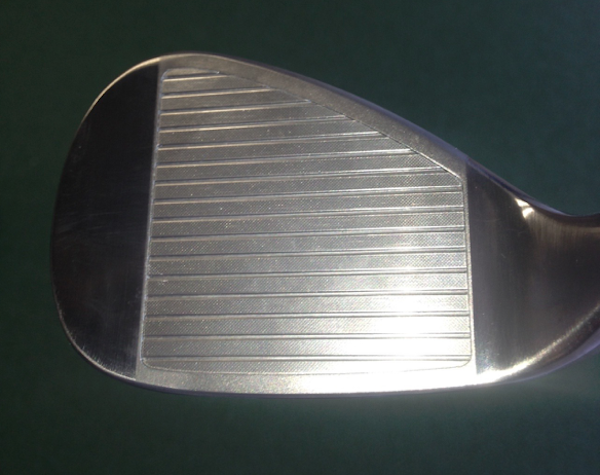
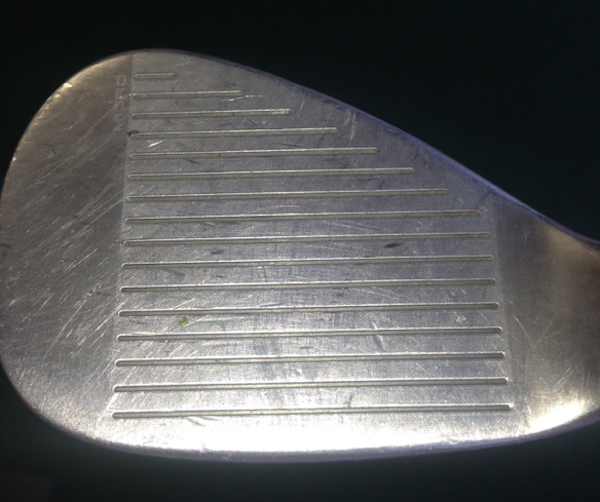
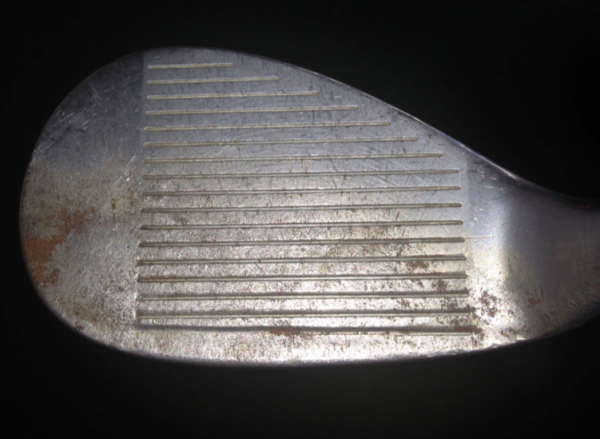
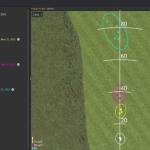
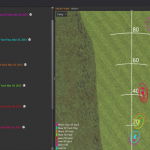
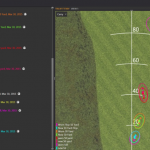















cody
Jul 2, 2015 at 2:11 pm
This article makes no sense. your data does not back up your conclusion.
Steve Daniel
Apr 18, 2015 at 8:24 am
I would rather know the difference in “raw” vs “chrome” or other finishes. the golf ball I use has a bigger influence on spin than this test with new vs. old.
A
Apr 9, 2015 at 1:53 pm
So, a super worn wedge spins just as much or up to 1000 rpm less than a brand new wedge? That’s the real take-away, right? I suppose that can be also regarded as a 0% or 10-20% reduction.
How much spin does the ball have when it lands?
My understanding, I can’t reproduce the trackman article as I can’t find it at the moment, is that on full shots the spin rate of a ball when it hits the green will roughly be the same (about 500 rpm) and the “lift” aspect has worn off and so it descends.
My understanding is that the more spin that is generated at the start of the ball’s flight, the higher the launch, the shorter the distance the ball flies and the steeper the landing angle. And that it’s this last element, the landing angle, that allows the ball to land and spin back.
Not every player wants or needs that. Did this “study” compare the deviation in spin rates shot to shot? Did the new wedge spin the ball more consistently at the same rate vs the super old wedge, or was there more variance shot to shot? I’d rather know my shot will react similarly on each shot than be concerned solely with the quantity of spin. It’s rather frustrating when you hit the middle of the green and it spins back off the front, or you expect it to spin with your brand new wedge so you hit it 10 yards past and it just stays there. At least in the process of wearing down a wedge, you’ve become familiar with how it reacts. But if you have access to a tour van and you’re familiar with how a brand new wedge reacts, than by all means, swap ’em out every round.
Gary Gutful
Apr 7, 2015 at 3:41 am
There are some super smug gits that comment on these articles.
Personally, I am glad that there are contributors that bother with these experiments (even if the methods aren’t accredited by the Society of Data Crunching Golf Noobs).
Loving the rusty look of my Mack Daddys but would happily replace if/when they stop cutting the pistachios in the spin department.
marcus
Apr 6, 2015 at 9:49 am
This study is scientifically un-measurable. Thanks for trying though.
TheCityGame
Apr 7, 2015 at 10:31 am
I love it when a guy thinks he’s sounding smart but ends up saying something completely stupid.
“This study is scientifically unmeasurable”.
What the hell does that even mean, dude? Are you trying to measure the study? The STUDY is scientifically unmeasurable?
Is there a way that it is measurable but just not in a scientific way?
Do you mean the spin rate on the clubs is not measurable?
If you’re going to be that smug about it (“thanks for trying though”), you better be able to come up with better reasoning than “this study is unscientifically unmeasurable”. Nonsense.
Bob Pegram
Jun 15, 2015 at 6:36 pm
Maybe he means that there are so many variables in how each player’s swing, angle of attack, etc. reacts with the club and ball, that it is impossible to make general conclusions. Even the author of the article mentioned that he was used to the sharper front edge of his most worn wedge which may explain the high spin from that wedge. It works for his swing – or he has gotten used to it and made his swing work with it> – who knows?
MRC
Apr 4, 2015 at 12:20 am
Love my Mizuno wedges even after two years.
The grooves look a bit tired but they come alive on the course.
Thanks for the article Tom.
Dave
Apr 2, 2015 at 7:28 pm
So in order to prevent hitting shots that don’t spin, we need to change our wedges when we notice that they’re not spinning? What a waste of a read.
Ken N
Apr 2, 2015 at 4:52 pm
I just wrote to Barney Adams about this very topic a couple of weeks ago, so I was pleased to see it addressed here today. Part of my question that was left unanswered, though, was: aren’t today’s wedges made of tougher stuff, to last longer, than previous generations of wedges? If the limit was, say, 5,000 strikes per wedge five years ago, shouldn’t I expect to get 25% more out of today’s space-age-materials club? The Big Names are marketing them that way, and they’re certainly priced that way.
Scott
Apr 2, 2015 at 2:55 pm
Tom,
Tom,
Were you surprised that the differences were not more pronounced? Maybe I just can not comprehend the difference in 400 to 600 rpm, it does not seem like a lot. Although 1000 rpm on the full shot seems substantial, it would be nice to see was this means on the green in various conditions. I guess that is something that I can play with on my own.
A side question. I have used a grove sharpening tool. Are there tests at a USGA event to see if the wedges comply? If not, do you know of anyone getting call out for illegal grooves?
Thanks
other paul
Apr 2, 2015 at 2:33 pm
I like that the clubs are different but all the same loft. Because not everyone buys a new set of vokeys every year or two. Lots of people buy different brands each time. I played Cleveland two years ago, now vokeys, thinking of Mack daddy’s next time. This is probably more realistic for the majority of golfers.
other paul
Apr 2, 2015 at 2:07 pm
Well Tom, I look forward to the same article in 5 years when you have had time to spend $450 on 3 identical wedges. I hope you enjoy storing one, hitting one 10,000 times to wear it out, and hitting one 30,000 times to really wear it out. And then rewriting this article for all the angry people.
other paul
May 16, 2015 at 1:12 pm
Looks like there are two of us…
AndyP
Apr 2, 2015 at 1:22 pm
What I got from the article is go source some really old worm wedges from the bargain bin. Cheers
petie3_2
Aug 23, 2015 at 7:40 am
My wedges of choice are 30 year old pre-Vokey Titleists; they’re almost identical to Vokeys but slightly heavier and better in the wet, long grass and sand. I had to pay $9 for one. (sob, outrageous).
mark
Apr 2, 2015 at 1:00 pm
All the statements are correct. The article is correct in that a new wedge will give you more backspin. If it doesn’t interest, you then don’t buy a new wedge. Sandblasting the face is a cheaper alternative and makes the old wedge spin like new and you keep the same feel of the familiar wedge.
Philip
Apr 1, 2015 at 11:56 pm
I wonder if this is why we see so many PGA players with rusty wedges. Maybe the rough surface gives them a consistent spin that doesn’t tend to change as they replace wedges.
Mike
Apr 1, 2015 at 7:30 pm
According to Andrew Rice in The Wedge Project, it’s actually the surface area on the clubface between the grooves that through friction impart the majority of the spin on the golf ball. Andrew recommends to find a local business that does sandblasting and have them sandblast the face of your wedge a few time per year with aluminum oxide. I found a place that does it for $5 a club after which it spins like day it came off the rack.
Philip
Apr 1, 2015 at 11:53 pm
Same reason why some PGA players do not clean the sand out of their wedge grooves after coming out of the bunker – extra spin. I could put some water on my wedges and do a few practice shots in the sand before play to get them ready. I guess I could always empty the sand out of my bag after a few weeks or so.
Tom Stickney
Apr 1, 2015 at 5:04 pm
RG– I take umbrage that you feel this way; I do articles based on facts. I don’t sell clubs nor do I get paid to do these articles. Thus I have no bias other than the facts.
RG
Apr 1, 2015 at 10:53 pm
OR
The other thing is you can over spin a wedge. Sam Snead said,” I never made any money with my ball coming back at me.”
Jackie Burke still plays the same wedge he used to win Augusta in the 50’s.
The”facts” that you represent in your article are based on a data set from a machine, and from the photos you attached three dissimilar clubs. .Empirically speaking your data sets are flawed. In addition here are more “facts” that go into visualizing and creating good wedge shots. other than new grooves and more spin. Touch and feel have a lot to do with it and new wedges can be counter productive to this end.
Thank you for sharing and I do not mean any rudeness toward you and your findings, but your experiment is flawed,
Steve Daniel
Apr 18, 2015 at 9:10 am
Tom, don’t take offence.
as a retired engineer I like data, but there are too many things left unsaid in this review. for this to be a valid test you would need several sets of documented clubs with several samples of balls, people, and etc. that doesn’t mean that I didn’t enjoy the article. I do the same types of things myself.
Nathan
Apr 1, 2015 at 5:04 pm
Brand New Pro V1 Ball makes my wedges feel new again
Perry
Apr 1, 2015 at 12:58 pm
The only way I’d buy this is that if all 3 clubs were the exact same model with the exact same shaft. It’s an awesome idea, but I don’t think you’re comparing apples to apples. You’d get similar results if you had three different head/shaft combinations of new clubs.
Dave S
Apr 1, 2015 at 2:42 pm
Took the words right out of my mouth. From the pics, it’s pretty clear they are not the same brand.
RG
Apr 1, 2015 at 4:54 pm
You are 100% correct. This “article” is another in a long line of “you need to go buy new clubs” articles.
OR
The other thing is you can over spin a wedge. Sam Snead said,” I never made any money with my ball coming back at me.”
Jackie Burke still plays the same wedge he used to win Augusta in the 50’s.
Brody
Apr 1, 2015 at 12:15 pm
Tom,
Nice article, I enjoyed it. Would you foresee those Groove Sharpener tools making any difference on spin rates? Replacing wedges every season can certainly get expensive; I’d be interested in seeing if those tools make any difference on Trackman.
Steve
Apr 1, 2015 at 1:00 pm
+1
Jon
Apr 1, 2015 at 1:56 pm
The only problem with groove sharpeners is if you cut the grooves too deep that club becomes non-conforming. Since I don’t play in any USGA sanctioned tournaments and no longer maintain GHIN, I use the groove sharpener at the beginning of every season (Golf Works part no. GW1111) and it does a pretty good job. It saves me $120/year which buys me about 3 rounds of golf.
Mikko U
Apr 1, 2015 at 11:56 am
Interesting to read that there wouldn’t be much difference on partial swings. For me there was a huge difference going from three years old wedges to new ones even on 40-yard chip/pitch shots. They turned into hop and stop rather than hop and roll out.
Also, isn’t there quite a lot of slippage from any 58* wedge? So wouldn’t some 50-52 degree wedges have worked better as there’s less slipping due to the loft and the grooves would have probably made a bigger difference (or showed more precisely that there isn’t a difference)?
Chuck
Apr 1, 2015 at 11:42 am
I don’t doubt the data; but almost as important to spin, is the feel I have developed with older wedges. Weight, balance, bounce, etc. Before the groove rule went into effect, I bought a handful of the kind of gap wedge (Vokey 452.08) and sand wedge (Vokey 258.08) that I love, and I nurse them as much as possible. So while the grooves do get worn, at least they are pre-rule grooves. Legal for me until 2024.
This all gives real meaning to the short-lived (why???) TaylorMade solution, which was to supply exchangeable faces for its XFT series wedges.
http://www.taylormadegolf.asia/bn/xft-wedge-specifications.php